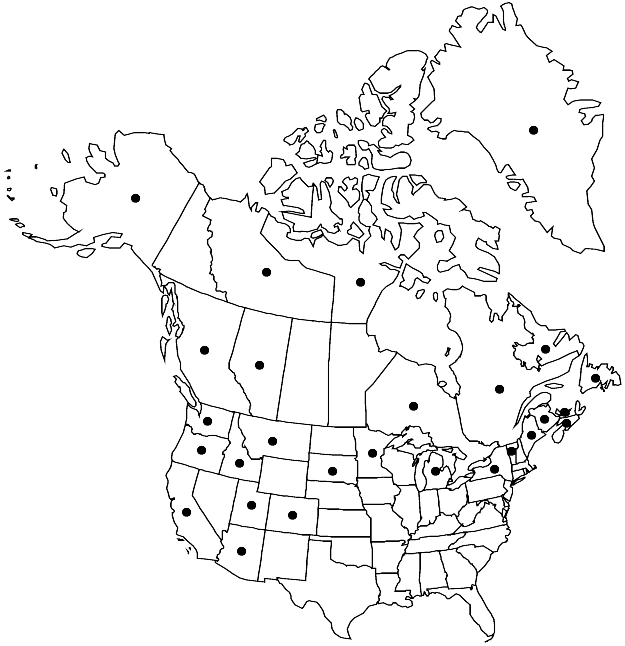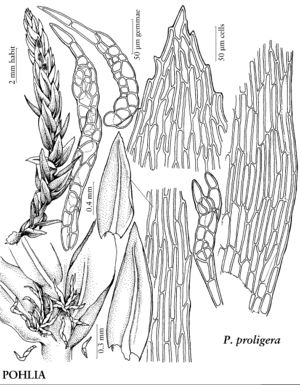Pohlia proligera
Bot. Not. 1894: 54. 1894.
Plants medium-sized, green, glossy. Stems 0.5–3.5 cm. Leaves ± erect, lanceolate, 0.6–1.6 mm; margins serrulate to serrate in distal 1/3; costa subpercurrent; distal medial laminal cells rhombic to linear-rhomboidal, 60–105 µm, walls thin. Specialized asexual reproduction usually present when sterile; axillary gemmae in dense clusters, oblong-linear to linear-vermicular, white, pale green, or rarely pale orange, hyaline, leaf primordia restricted to apex, erect, peglike, elongate. Sexual condition dioicous; perigonial leaves ovate; perichaetial leaves weakly differentiated, narrowly lanceolate. Seta orange-brown. Capsule inclined 95–180°, brown to stramineous, pyriform, neck 1/3 urn length; exothecial cells short-rectangular, walls sinuate; stomata superficial; annulus present; operculum convex-conic; exostome teeth yellow-brown, narrowly triangular-acute; endostome hyaline, basal membrane 1/2 exostome length, segments distinctly keeled, broadly perforate, cilia short to rudimentary. Spores 16–21 µm, finely roughened.
Phenology: Capsules mature summer (Jun–Aug).
Habitat: Acid, sandy disturbed soil, path banks, stream banks
Elevation: low to high elevations
Distribution

Greenland, Alta., B.C., N.B., Nfld. and Labr., N.W.T., N.S., Nunavut, Ont., P.E.I., Que., Alaska, Ariz., Calif., Colo., Idaho, Maine, Mich., Minn., Mont., N.Y., Oreg., S.Dak., Utah, Vt., Wash., Europe.
Discussion
Pohlia proligera is a relatively common species in boreal and high-montane habitats. The leaves are glossy, with dense, feltlike clusters of whitish, pale green, or sometimes pale orange gemmae in their axils. The gemmae are linear-vermicular with one or two peglike apical leaf primordia.
Selected References
None.
